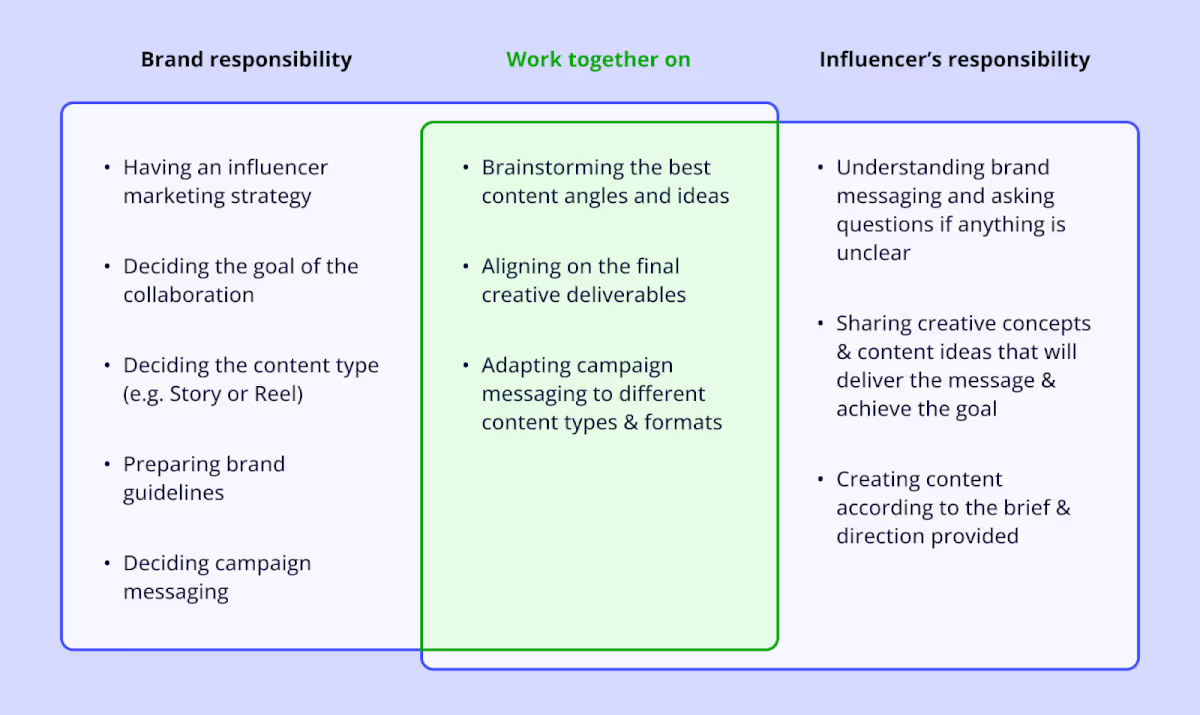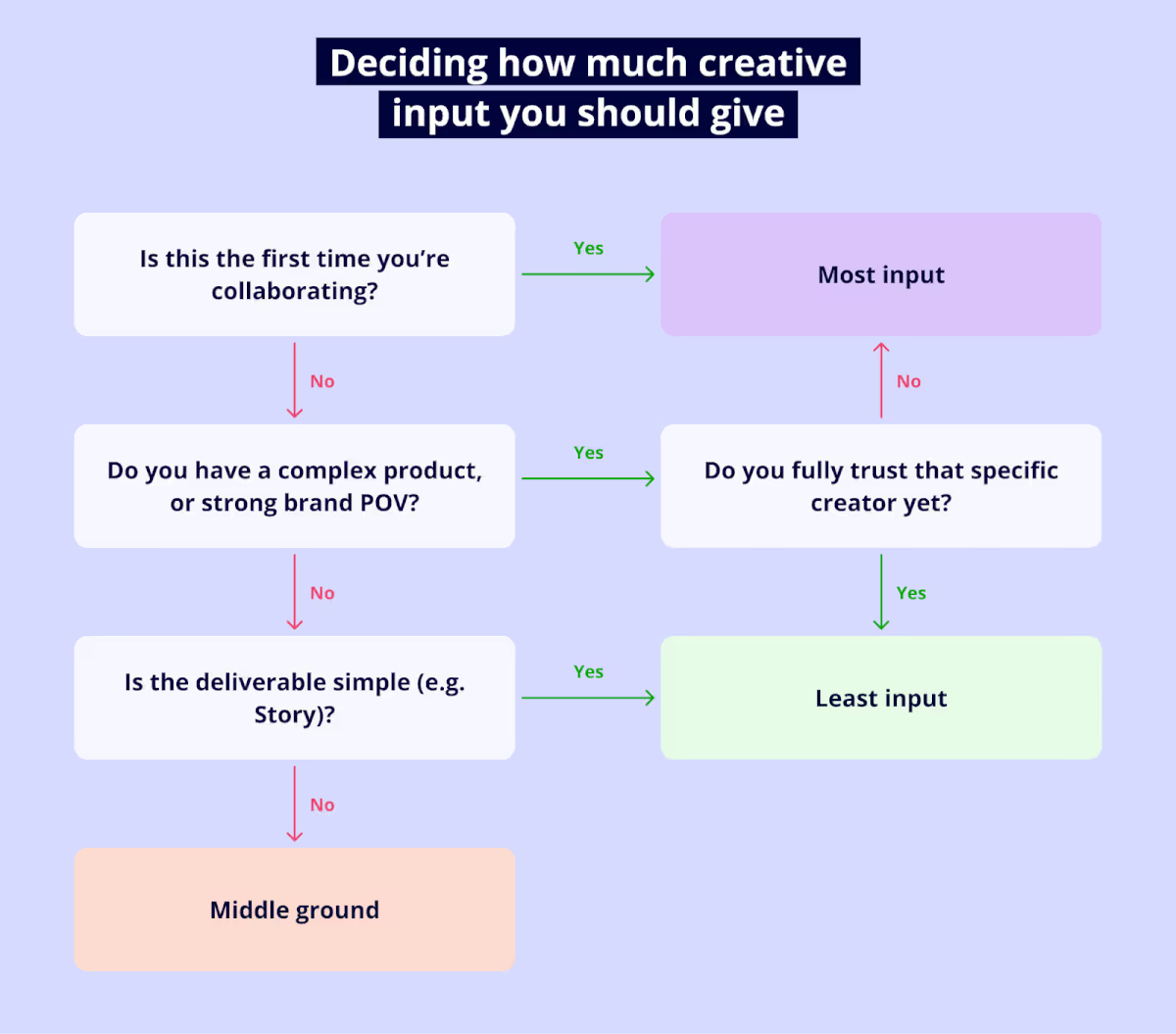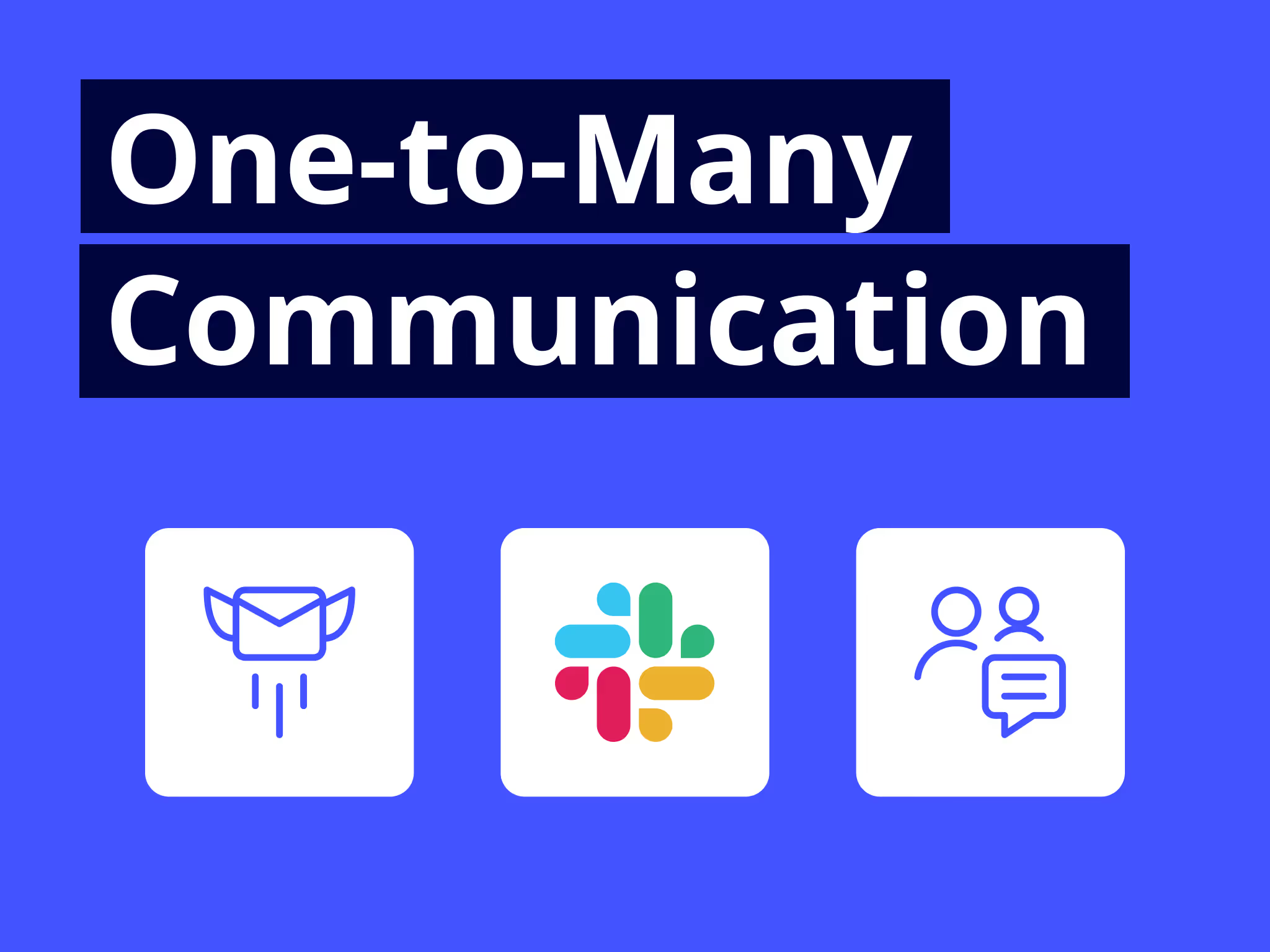If you’ve been in the influencer marketing world for even a week, you know everyone here shouts: “Give your influencers creative freedom!” from the rooftops. But sometimes, influencers just don’t deliver content that’s up to the mark.
Ultimately, there has to be input from both sides for an influencer partnership to work successfully.
But, this still leaves many questions unanswered:
- At what stage do you provide creative inputs?
- Do you provide creative input to everybody, or does it depend?
- In what areas should you let loose, and in what areas should you monitor closely?
With the help of experienced influencer marketers Anna-Maria Klappenbach and Andreea Moise, I’m going to equip you with everything you need to make decisions like these in your influencer program.
Let’s start with why you need creative input in the first place. What are the challenges that come with having no guardrails at all?
The 3 primary challenges of complete creative freedom
1: Not all influencers are equal
Creator A might work brilliantly if given creative freedom — they’ll research the brand, come up with a creative angle, and exceed your expectations.
Creator B might not work so well without constraints — they might highlight a feature that no longer exists, create dry & sloppy content, and disappoint you.
Some creators thrive with very little input from you because of their experience, connection with the product, a better backend team, etc. Other influencers might need a fence to produce the same quality of content.
If you try to figure out the natural tendencies of every individual creator via trial and error, you’ll waste a lot of time and resources. Plus: this approach is not scalable. It’s best to rely on at least some constraints to breed creativity rather than letting loose completely.
2: Influencers can get things wrong
No influencer knows your product as well as you do. They might get stuff wrong if you offer uninhibited creative freedom — like technical information about a feature of your product. Or something major, like not aligning with your brand’s POV on a controversial industry topic.
The more technical your product, the more guidance creators might require. For example, in the collaboration between creator Erin McGoff and OnePlus, Erin could ace the tax advice (since that’s her expertise), but she might’ve required some assistance to share the features of the OnePlus phone (since that’s not her expertise, but the marketer’s).

Remember that you know your product inside out, not the influencer. Rugile Paleviciute, Head of Global Partnerships at Burga, echoed this sentiment when speaking about long-term influencer partnerships:
It’s also important to remember general responsibility areas of brands vs. creators in the influencer marketing world. Knowing what’s on you and what’s on the creator can clear a lot of fog around creative freedom.

3: You hold back on improving performance by resisting brand input
Sometimes brand marketers hold back on sharing their opinion on content in the name of creative freedom.
But, as a brand marketer, you probably have a ton of experience and knowledge to offer. Beyond being an expert in your product, you’re also likely experienced in social media & its algorithms. Your team might have someone who can ace hooks, trends, and capitalize on new social features.
Offering zero input, in that case, might mean you’re restricting your own ROI. Sharing your ideas with influencers — backing your experience — can enrich performance instead of dampening it.
Adjusting your creative input in different situations
Alright, so we understand the challenges. It’s your job as the marketer to understand when these things are relevant, and adjust your process to mitigate the risk, and maximize performance.
Your approach is going to vary based on a few factors (like familiarity & complexity). Let’s start with a flowchart, then dig into it and explain each part.

Disclaimer 1: this is designed to provide a starting point. Use your experience as a marketer, and your gut feeling, to break the process if/when it feels right. 🙂
Disclaimer 2: this is really designed for paid influencer partnerships. It's less relevant for seeding/gifting/affiliates.
1: The most creative input (check the concept and first draft)
In some situations, you want to be hands-on from briefing to draft. Share brand guidelines, examples of successful influencer content from the past, product tutorials, and anything else to help influencers deliver their best work. Then check in to align on the creative concept, and review draft content to approve before posting.
Here are some of those scenarios:
- When your product is complex to understand: the more complicated your product, the more guidance a creator needs. Without your creative input, they might miss out on features, present inaccurate information, and fail to deliver your unique value to their audience.
- When the type of content requires it: there are many different types of content across social media — how-tos, product tutorials, DIYs, etc. Some types of content creation require more guidance than others. For example, if you’re asking someone to embed your product into a “day in my life” kind of video, they don’t need a lot of help from you. But if you’re collaborating with them to make a full-fledged product walkthrough, they can’t have a wide degree of creative freedom since you know the product best.
- When you’re collaborating with a creator for the first time or if they’re not experienced: you don’t know each other yet, so make sure you’re fully involved in the process. If you do repeat collaborations, you can become less hands-on over time. If the creator is also new to the field, they might need a bit more help than someone who’s been in the industry for a hot minute. Andreea Moise adds that despite the additional work, the ROI is usually there:
2: The middle ground (align on the concept before shooting)
If you’re working with a repeat partner, you can start to ease off a little. Though, if the creative isn’t super straightforward, you’ll still want to align on the concept before they start making a video.
- When you’re collaborating with a regular influencer partner: the more a creator collaborates with you, the more they understand your product & expectations. As they move from the “new” to the “familiar” stage, you can let go of some creative input.
- When you’re partnering with an experienced creator: even in short-term collabs, if you’ve chosen a creator who’s been in the industry for a while, they might not need a lot of guidance. They’re able to pick up things quickly and deliver what you need.
- When you’re introducing a new creative angle: if you’re in experimentation mode, the middle ground is the best place to be. Don’t guide a creator every step of the way, but let them take charge of more than usual.
- When you’re collaborating on in-feed posts: Instagram Stories have a much less shelf life than a YouTube video. You can afford to color out of the lines in content types that leave less footprint compared to formats where your collab post will continue garnering eyeballs and engagement.
For the middle-ground creative freedom stage, you want to check the concept (the rough script, how your product is introduced, etc.). Trust the creator to do their magic on the “creation” aspect.
Anna-Maria Klappenbach has an analogy for the ‘middle ground’ of creative freedom — which is a perfect way to remember it:
3: The least creative input (share just goals and guardrails)
If it's a long-term partner, with a simple product, and a simple deliverable, you can be much more hands-off.
Here are some situations where you might choose not to get involved with approving concepts or drafts:
- When you’ve built trust over a long-term collaboration: if the creator’s been partnering with you for years, they know your product like the back of their hand and what kind of deliverables you like.
- When you’re partnering for Stories: some content formats are simpler than others. Stories are meant to be more authentic, less polished, and they're generally less work to do (or redo if needed). And, they're only up for 24 hours while an in-feed post is forever. If you want to give creative freedom, reduce your workload, and get experimental with new angles, Stories is the perfect format to test with.
- When the creator’s confident and can back up their idea with experience: if an influencer has an excellent track record of high performance and has been an influencer marketing game for a while, it’s worth considering their ideas — even if they’re outside the box.
- When you’re working with lifestyle or entertainment influencers: influencer marketing has many content categories — such as educational, entertainment, lifestyle, etc. Some content categories can work with more creative freedom than others. For example, if you’re working with education creators, they will have less creative freedom since you know the product better. But with lifestyle or entertainment influencers, there's more scope for creative freedom.
You should still provide a loose brief mentioning your goals with the campaign and some dos & don’ts on brand vocabulary and POVs.
Things to keep in mind
While the flowchart above gives you a starting point, I'd also encourage you to keep in mind a few more points.
- The maturity of your influencer program might change your approach to creative freedom. If you're still in the first 1-2 years of the program, it's natural to approach the channel more carefully, with fewer risks and big swings. Brands that you see online with wild creative ideas have generally already got wins under their belt. They've proven influencer marketing as a channel, and got buy-in for experimentation.
- The expertise of your team might change your approach to creative inputs too. For example, you might be super comfortable with offering creative advice on Instagram, but TikTok short-form videos are completely alien to you. If that's the case, then naturally you're going to be less hands-on with TikTok collaborations.
- Once again, trust your instinct. You can prepare an approach like this as a default position, but if it feels right to break the rules and do something different, go with your gut.
FAQs on creative freedom
1: How many people in your team should give creative input on influencer content?
If you have more than one marketer on your team, it’s best to assign one point of contact to each influencer and have them communicate everything from A–Z only to them, including creative input. It moves things faster, makes communication less confusing, and avoids the “too many cooks in the kitchen” problem.
That said, if a content concept or draft feels totally off or novel, you should get input from your team & get senior marketers involved. But in most scenarios, having a single marketer responsible for one creator’s creative inputs is ideal.
2: At what stage should you offer creative inputs to a creator?
The prerequisite should always be sharing an influencer brief detailing campaign goals, brand dos & don’ts, examples of successful content, etc.
Once that is done, an influencer can provide a rough concept to you sharing the script, caption, video frames, and more. This is the stage where you should offer your feedback and creative input.
If you’re planning to review the draft content before posting too, make sure you share all your pointers & changes here. Reshooting content in the draft stage can be time-consuming, so it’s best to reserve little to no edits for that phase.
3: What should you do if you and the creator disagree on the core concept?
If the creator is experienced and/or has been a long-term partner who’s confident in their idea (and has an excellent performance report card), we’d recommend taking a shot and testing their idea.
But if they don’t check all those boxes, try to find a middle ground where you don’t have to take a large gamble, but they don’t have to kill their creativity, either. For example, they can test a less intense variation of their idea on a short shelf-life content format like Instagram Stories. If it performs well, you can take it in-feed.
4: What changes in creative freedom as you scale your influencer marketing program?
As you scale your influencer marketing efforts, you might start to face challenges with content approvals.
You'll either decide to take on the workload of checking hundreds of pieces of content, or let influencers just start posting without approvals.
This is a strategic choice, and it depends on your appetite for small mistakes and weak pieces of content here and there.
If you have a particularly strict brand image, or complicated offering, it might be worth the workload. Otherwise, at a certain point, it probably makes sense to save the work and cut the approval process eventually.
Finding the right balance on creative input
Giving influencers creative input is like walking a tightrope. You have to balance providing enough guidelines so the influencer can meet campaign goals without restricting their innovative ideas.
How much creative freedom you can provide will depend on:
- how early you are in your brand’s influencer marketing journey
- what type of campaigns you’re running (it’s impossible to scale giving maximum creative inputs in self-serve affiliate programs or product seeding)
- your, your team’s, and your creators’ expertise & experience
- the content type you’re choosing for your influencer collabs
- your campaign goals
- …And more
While this is usually decided case-by-case, you can create a framework with "tiers" of input to act as a default. You'll probably adjust as you learn and grow, but it's helpful to categorize each of your collaborations and have a starting point.









